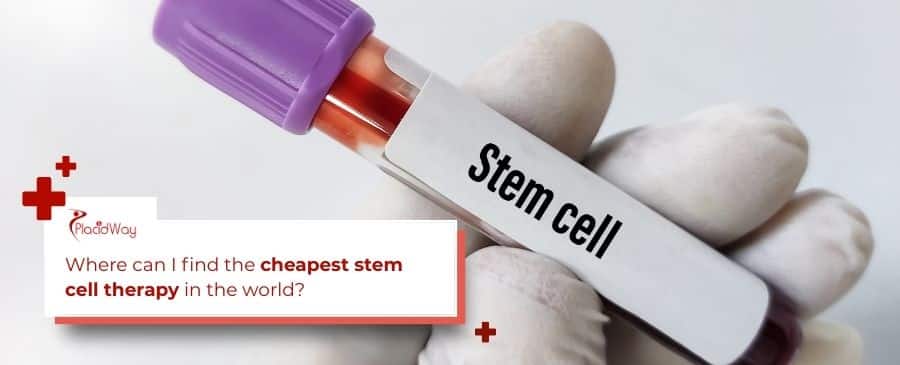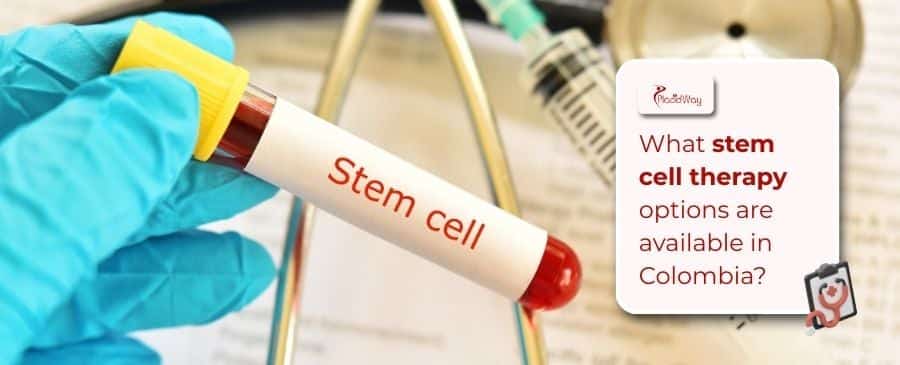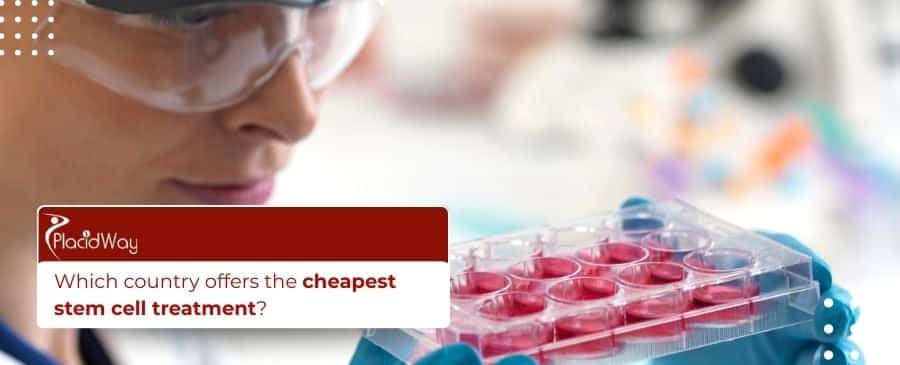Welcome to our comprehensive guide on finding affordable stem cell therapy! If you’ve been exploring regenerative medicine options, you’ve likely encountered the significant costs associated with these advanced treatments. It’s completely understandable to wonder where you can find the cheapest stem cell therapy without compromising on quality or safety. Many people are searching for viable solutions, and the good news is that there are indeed more accessible options available globally.
Stem cell therapy holds immense promise for various conditions, from orthopedic injuries to autoimmune diseases, offering hope for improved quality of life. However, in many Western countries, the price tag can be a major barrier. This is where the concept of medical tourism for stem cell treatments comes into play. Countries with developing healthcare sectors and lower living costs have become hubs for patients seeking high-quality, yet more affordable, medical interventions.
In this detailed blog post, we’ll dive deep into the world of affordable stem cell treatments. We’ll explore which countries are leading the way in offering budget-friendly options, discuss the factors that influence pricing, and, most importantly, provide crucial information to help you make informed decisions about your health. Our goal is to answer all your pressing questions, giving you the knowledge you need to navigate this complex landscape confidently and safely. Let’s find out how you can access the care you need without breaking the bank.
Which countries offer the most affordable stem cell therapy?
جدول المحتويات
When searching for the cheapest stem cell therapy, several countries consistently emerge as top destinations for medical tourists. These nations have developed robust medical tourism industries, offering competitive pricing, often without sacrificing the quality of care. Their appeal lies in a combination of lower operational costs, favorable exchange rates, and a growing number of highly trained medical professionals.
Key countries offering more affordable options include:
- Mexico: Particularly in border cities and tourist destinations, Mexico has become a popular choice due to its proximity to the US and Canada, offering treatments at a fraction of the cost.
- Ukraine: Known for its advanced research in regenerative medicine, Ukraine provides various stem cell treatments, often with a strong emphasis on research and development, at competitive prices.
- India: With a burgeoning healthcare sector and a vast pool of skilled doctors, India offers extremely cost-effective medical procedures, including diverse stem cell therapies.
- Thailand: A well-established medical tourism hub, Thailand combines high-quality medical facilities with excellent hospitality, making it an attractive option for affordable treatments.
- Malaysia: Similar to Thailand, Malaysia offers modern medical infrastructure and skilled specialists, with treatment costs that are considerably lower than in many Western countries.
It’s important to research specific clinics within these countries, as prices can vary. While these destinations offer more affordable stem cell treatment, always prioritize clinics that are transparent about their protocols, have experienced medical teams, and adhere to international safety standards.
What factors determine the cost of stem cell therapy?
Understanding the factors that contribute to the price of stem cell therapy is crucial when looking for the cheapest stem cell therapy. It’s not just about the procedure itself; a multitude of elements come into play, which can significantly sway the final bill. Being aware of these can help you better evaluate quotes and understand where cost savings might come from.
Here are the primary factors influencing the cost:
- Type of Stem Cells Used: Different sources of stem cells (e.g., adipose-derived, bone marrow-derived, umbilical cord blood, embryonic, induced pluripotent) have varying extraction, processing, and application complexities, which impact cost. Adult stem cells are generally more common and sometimes less expensive to process than other types.
- Condition Being Treated: The complexity and severity of the medical condition will dictate the treatment protocol, the number of cells needed, and the duration of therapy. Treating a degenerative joint disease might differ significantly in cost from treating a neurological disorder.
- Number of Treatments/Injections: Many conditions require multiple sessions or injections to achieve desired results, directly increasing the overall cost. A single injection will be far less expensive than a multi-session regimen.
- Clinic Location and Reputation: Clinics in major metropolitan areas or countries with higher living costs will naturally charge more due to increased overheads. A clinic with a long-standing reputation for success and advanced facilities will also typically command higher prices.
- Regulatory Environment: Different countries have varying regulations regarding stem cell research and application. Regions with less stringent (but still safe) regulations might have lower R&D and approval costs, translating to more affordable stem cell treatment for patients.
- Ancillary Services: The overall package might include consultations, diagnostic tests, post-treatment care, rehabilitation, and even accommodation or transport, all of which add to the total cost.
By dissecting these components, you can often identify areas where costs can be managed or where a particular clinic’s pricing strategy comes from. This knowledge empowers you to ask better questions and compare offers more effectively.
Is it safe to seek cheap stem cell treatments abroad?
The question of safety is paramount when considering any medical procedure, especially one as advanced as stem cell therapy, and even more so when looking for the cheapest stem cell therapy abroad. It’s a common misconception that “cheap” automatically means “low quality” or “unsafe.” While vigilance is always necessary, many international clinics offer high-quality care at lower prices due to different economic structures, not necessarily compromised standards.
Safety largely depends on the choices you make:
- Accreditation and Standards: Look for clinics that are accredited by recognized international bodies (e.g., Joint Commission International – JCI) or adhere to stringent national health regulations. This indicates a commitment to high standards of patient care and safety.
- Qualified Professionals: Ensure the medical team (doctors, surgeons, technicians) has appropriate qualifications, extensive experience in regenerative medicine, and specific expertise in stem cell applications. Inquire about their training and background.
- Transparent Protocols: A reputable clinic will be transparent about the type of stem cells used, their source, processing methods, administration techniques, and expected outcomes. They should also clearly explain potential risks and side effects.
- Facility Quality: Modern facilities with state-of-the-art equipment and sterile environments are indicators of a clinic that prioritizes patient safety. Ask for virtual tours or patient testimonials that mention the facility.
- Regulatory Oversight: Research the regulatory landscape for stem cell therapy in the target country. Some countries have clear guidelines, while others may have less oversight, which could be a red flag.
While the goal is to find affordable stem cell treatment, never compromise on safety. Thorough research, asking direct questions, and seeking second opinions are vital steps. Websites and platforms specializing in medical tourism often provide vetted options and patient reviews, which can be a valuable resource in your decision-making process.
What conditions are commonly treated with affordable stem cell therapy?
Stem cell therapy is a versatile treatment with potential applications across a broad spectrum of medical conditions. When seeking the cheapest stem cell therapy abroad, you’ll find that many clinics focus on specific areas where regenerative medicine has shown promising results. Understanding these common applications can help you determine if affordable stem cell treatment is a viable option for your particular health needs.
Some of the most frequently treated conditions include:
- الحالات العظمية: This is one of the largest areas of application. Stem cells are used to treat osteoarthritis, degenerative joint disease, torn ligaments and tendons (e.g., ACL, rotator cuff), disc degeneration in the spine, and chronic pain in knees, hips, shoulders, and back. The goal is to reduce inflammation, promote tissue repair, and alleviate pain.
- أمراض المناعة الذاتية: Conditions like rheumatoid arthritis, lupus, multiple sclerosis (MS), and Crohn’s disease are sometimes targeted. Stem cells, particularly mesenchymal stem cells (MSCs), are explored for their immunomodulatory properties, aiming to regulate the immune system and reduce inflammatory responses.
- الاضطرابات العصبية: While more complex, some clinics offer stem cell treatments for conditions such as Parkinson’s disease, Alzheimer’s disease, stroke recovery, and spinal cord injuries. These therapies aim to promote neurogenesis, reduce inflammation, and protect existing neural tissue.
- أمراض القلب والأوعية الدموية: Research and limited clinical applications exist for conditions like heart failure and myocardial infarction, where stem cells are used to repair damaged heart tissue and improve cardiac function.
- Anti-Aging and Wellness: Beyond specific diseases, some clinics offer stem cell treatments for general rejuvenation, improved energy levels, skin health, and overall wellness.
It’s crucial to consult with medical professionals to determine if stem cell therapy is appropriate for your condition and to understand the evidence supporting its use for your specific case. While the promise of affordable stem cell treatment is appealing, ensuring the treatment aligns with established scientific understanding and clinical experience is paramount.
How can I find a reputable clinic for budget-friendly stem cell treatment?
Finding a reputable clinic is perhaps the most critical step when seeking the cheapest stem cell therapy abroad. While cost is a major driver, ensuring the clinic is trustworthy and competent should always be the top priority. A systematic approach to research and verification can help you distinguish legitimate, high-quality providers from less reliable ones.
Here’s how to approach your search:
- Check for International Accreditations: Look for clinics that hold international accreditations such as Joint Commission International (JCI). This signifies that the clinic meets global standards for patient safety and quality of care.
- Verify Medical Team Credentials: Research the doctors and specialists who will be involved in your treatment. Confirm their qualifications, years of experience in regenerative medicine, and any specialized training in stem cell therapy. Are they board-certified in their respective fields?
- Read Patient Testimonials and Reviews: Online reviews, patient forums, and success stories can offer valuable insights into other patients’ experiences. Be discerning, but consistent positive feedback about outcomes, patient care, and facility cleanliness is a good sign.
- Request Detailed Treatment Plans and Quotes: A reputable clinic will provide a clear, itemized quote and a comprehensive treatment plan. This should include the type of stem cells, the number of cells, the procedure, follow-up care, and all associated costs without hidden fees.
- Ensure Transparency and Open Communication: The clinic should be willing to answer all your questions thoroughly and clearly. They should provide information about their protocols, safety measures, potential risks, and expected results. Avoid clinics that make exaggerated claims or pressure you into quick decisions.
- Utilize Medical Tourism Facilitators: Companies like PlacidWay specialize in connecting patients with reputable international clinics. They often pre-vet clinics, help with logistics (travel, accommodation), and provide support throughout your medical journey, making the process of finding affordable stem cell treatment much easier and safer.
Remember, a little extra effort in research can save you from potential risks and ensure you receive the best possible care for your investment in stem cell treatment cost abroad.
What are the different types of stem cell therapies and their cost implications?
The world of stem cell therapy is diverse, with various types of stem cells being utilized, each having its own source, processing requirements, and, consequently, different cost implications. Understanding these differences is key when looking for the cheapest stem cell therapy that is also appropriate for your condition.
Here’s a breakdown of common types and their typical cost considerations:
| نوع الخلايا الجذعية | Source | Cost Implications |
|---|---|---|
| الخلايا الجذعية الذاتية المنشأ | Patient’s own body (e.g., bone marrow, adipose tissue/fat) | Often the most affordable stem cell treatment option. Involves a simple extraction, processing, and re-injection during the same visit or within a short period. No donor costs or rejection risk. |
| الخلايا الجذعية الخيفيّة | Donor source (e.g., umbilical cord blood, placental tissue, adult donor) | Generally more expensive due to donor screening, procurement, banking, and potential need for matching. Offers advantages for certain conditions or when autologous cells are unsuitable. |
| الخلايا الجذعية الجنينية (ESCs) | Early-stage embryos | Highly controversial and largely restricted/illegal for clinical use in many countries due to ethical concerns. Not widely available clinically, thus cost data is not readily comparable for “cheapest stem cell therapy” searches. |
| الخلايا الجذعية متعددة القدرات المستحثة (iPSCs) | Adult cells reprogrammed to an embryonic-like state | Primarily in research phases. Clinical application is minimal and highly experimental. Cost is not a factor for general patient consideration when seeking affordable stem cell treatment. |
Most clinics offering affordable stem cell therapy for common conditions will likely focus on autologous or allogeneic mesenchymal stem cells (MSCs) derived from umbilical cord tissue or Wharton’s jelly, as these are more readily available and less controversial than ESCs or iPSCs. Always confirm the specific type of cells being offered and their scientific backing for your condition.
Are there any hidden costs associated with international stem cell treatment?
While the initial quote for cheapest stem cell therapy abroad might seem incredibly attractive, it’s crucial to factor in all potential expenses to get a realistic picture of the total cost. Hidden costs can quickly add up, turning an affordable option into a less budget-friendly one if not anticipated. Being prepared for these additional expenses is key to a smooth medical journey.
Common hidden or often-overlooked costs include:
- Travel Expenses: Flights, visas, and local transportation (taxis, ride-shares) can be substantial, especially for international travel. Consider the cost for any accompanying family members.
- إقامة: You’ll need to factor in lodging for the duration of your stay, which might extend beyond the immediate treatment period for recovery or follow-up.
- Pre-treatment Diagnostics: While some clinics include initial consultations and basic diagnostics, complex or specialized tests (e.g., advanced imaging, blood work) might be an extra charge if not explicitly stated in the package.
- Medication and Post-Treatment Care: Any medications prescribed before, during, or after the procedure, as well as subsequent physical therapy or rehabilitation sessions, might not be included in the base price.
- Translator Services: If you’re traveling to a country where you don’t speak the local language, you might need to pay for a translator, though many medical tourism-focused clinics offer this as part of their service.
- Exchange Rate Fluctuations: The cost can vary slightly depending on the currency exchange rate at the time of payment. Keep an eye on the rates.
- Travel Insurance and Medical Complications: Standard travel insurance might not cover medical tourism. Consider specialized medical travel insurance. While rare, unexpected complications could lead to additional medical expenses.
- Communication Costs: Staying in touch with family or accessing internet services abroad can incur charges.
- Food and Personal Expenses: Daily living costs for meals, personal items, and any local sightseeing should also be budgeted.
Always request a fully itemized quote from the clinic that clearly lists what is and isn’t included. A reputable medical tourism facilitator can often help you clarify these details and provide more accurate total cost estimations for your affordable stem cell treatment journey.
What should I consider before traveling for affordable stem cell therapy?
Deciding to travel internationally for the cheapest stem cell therapy is a significant decision that requires careful thought and planning beyond just the treatment itself. To ensure a safe, effective, and stress-free experience, there are several key considerations you should address before you even book your flight. These factors contribute not only to your health outcomes but also to the overall success of your medical journey.
Here’s a checklist of what to consider:
- Legality and Regulation: Research the legal status and regulatory framework of stem cell therapy in your chosen destination country. Ensure the procedures offered are legally sanctioned and overseen by a national health authority. This helps confirm that the “affordable stem cell treatment” isn’t bypassing essential safety protocols.
- Clinical Suitability: Have you had a thorough medical evaluation by both your local doctor and the international clinic’s specialists? Ensure they agree that stem cell therapy is a suitable and potentially beneficial treatment for your specific condition. Request and understand the full treatment protocol.
- Clinic and Doctor Verification: Reiterate your due diligence on the clinic’s accreditation, the medical team’s qualifications, patient testimonials, and transparent communication. Don’t hesitate to ask for virtual consultations or direct contact with the medical staff.
- Travel Logistics and Health: Assess your physical and mental readiness for international travel, especially after a medical procedure. Consider flight duration, potential jet lag, and the climate of the destination. Will you need assistance during travel? Ensure your passport is valid and any necessary visas are obtained.
- Budget and Contingency Funds: As discussed, factor in all potential costs (travel, accommodation, food, medication, follow-up, and a buffer for emergencies). Ensure you have access to funds while abroad.
- اللغة والتواصل: While many clinics cater to international patients with English-speaking staff, consider if a translator will be needed for nuanced discussions, and confirm its availability and cost.
- Follow-up Care Plan: Discuss with both your local doctor and the international clinic about post-treatment care. How will your progress be monitored upon your return? Who will handle any immediate concerns or complications? Having a clear plan is vital for long-term recovery.
- Cultural Differences: Be aware of cultural norms and expectations in the destination country to ensure a comfortable and respectful experience.
By thoroughly addressing these considerations, you can confidently pursue affordable stem cell therapy abroad, maximizing your chances for a positive outcome and a well-managed experience.
Ready to explore options for effective and affordable stem cell therapy? PlacidWay is your trusted partner, connecting you with reputable clinics worldwide. Discover tailored healthcare solutions and plan your medical journey with confidence.






